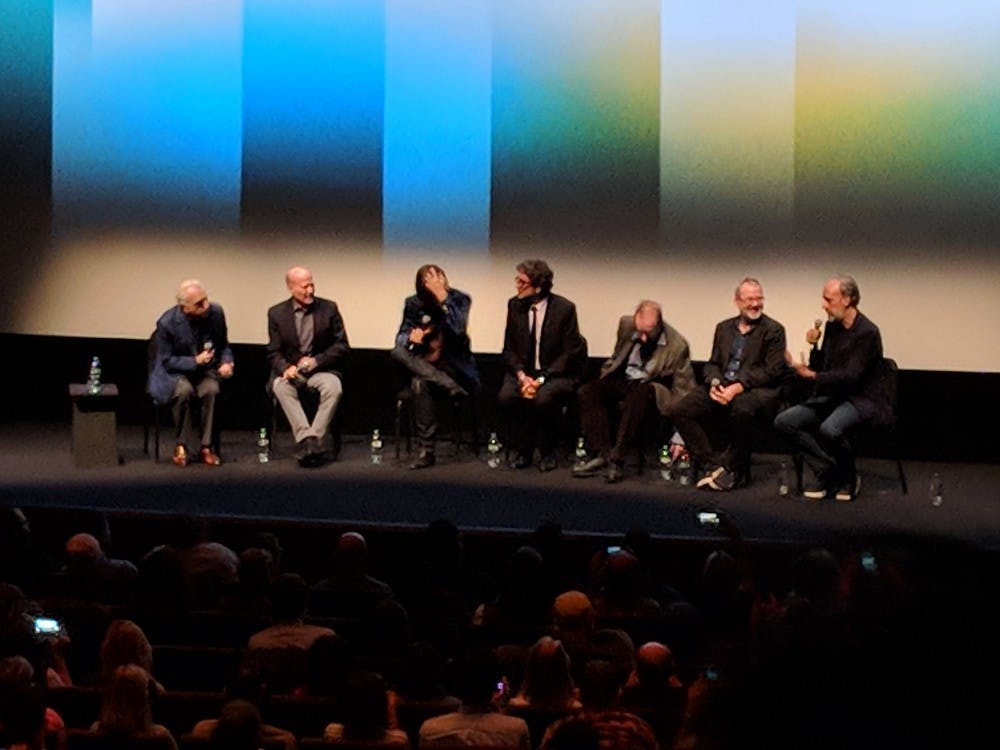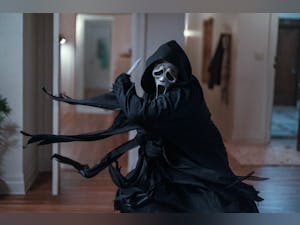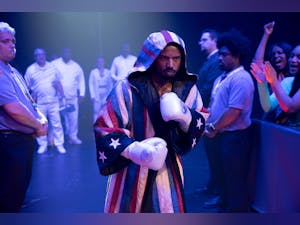From: Silver Screen
“The Other Side of the Wind” is a challenging, unwieldy view into the director

Peter Bogdonavich, Frank Marshall and Bob Murawski talking about The Other Side of the Wind after the New York Film Festival Premiere.
“The Other Side of the Wind” had a long journey before it made its way to screens. It was Orson Welles’ final outing as a director before he passed. He spent years trying to get funding to finish this film. Welles, by the 1980s, had garnered an enormous amount of respect, but that didn’t mean people were willing to sign on to something that was experimental. Welles was a man who was emboldened by his eccentricities, especially in the tail end of his career. When he passed in 1985, hours of shot footage were forgotten for years. This made Frank Marshall and Peter Bogdanovich (who also stars as Brooks Otterlake) spend years trying to get the movie off the ground again.
The film follows the birthday party of a director named Jake Hannaford (John Huston), an acclaimed filmmaker who is also a spiteful drunk, which takes place at his estate with producers and crew of his new movie that are worried about whether he’ll finish it or even if it’ll actually make sense. It’s not hard to ignore the autobiographical underpinnings of his character. Orson Welles relates to this character, bothered by the constant questioning and analysis of his films, and just wants art to express itself more fluidly. Through Hannaford, one can make the assumption that the thing that gives Welles the most freedom, filmmaking, is also the thing that imprisons him.
The film is shot in a documentary style, by way of “Cloverfield” or “Real Life,” which was quite ahead of its time when it was filmed, but seems like a tired, low budget trope now. The story relies on the cameras of the journalists and guests in the party to cover the narrative, and brings us closer to these characters. This raw, documentary style is executed incredibly well while also framing visually stunning shots. That said, it also comes at a disservice of some of its characters. The film attempts to balance too many threads using this technique and jumps back and forth between characters. It’s easy to get lost because of it, and it detracts from the impact of the story.
The film also cuts back and forth between the finished version and the rough cut of Hannaford’s film. The cut of Hannaford’s film is nonsensical, and the producers of the film are frustrated by this, but Hannaford appreciates it. Welles spends a significant amount of time in that world, and some of the sequences in Hannaford’s film are awe-striking, but it does leave more questions to the viewer than answers.
It’s incredibly difficult to finish a film and also attempt to honor the filmmaker’s intentions. Editor Bob Murawski spent hours upon hours compiling the plethora of footage and information, and did the impossible task of completing the film. At the end of the day, no one knows what Welles’s final product would’ve been like, but the film, with the help of previous collaborators Marshall and Bogdanovich, who were close with Welles, provides an interesting conclusion.
Grade: B-
The film is out in limited engagements and Netflix on Friday, November 2nd




